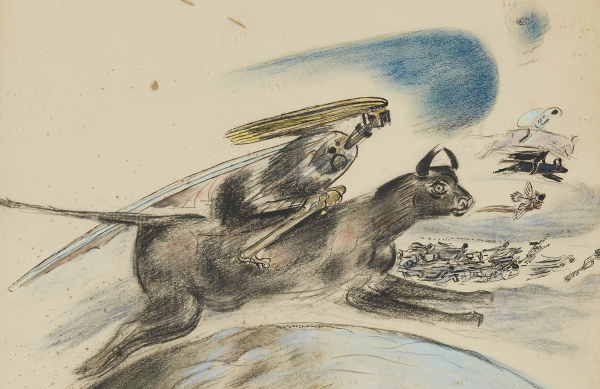Wyndham Lewis was a key figure in British Modernism, both as a painter and a writer and most notably as the founder of the Vorticist movement. Lewis was born in 1882 in Novia Scotia but moved to London at a young age after his parents separated. He studied at the Slade School of Fine Art but decided to leave for the cultural and artistic hub of Paris without finishing his course.
In Paris, Lewis developed an interest in Cubism and Expressionism which had a profound impact on his own work and ideas. In 1914, Lewis founded the avant-garde art movement known as Vorticism, along with artists such as Ezra Pound and Henri Gaudier-Brzeska. Vorticism aimed to capture the energy and dynamism of the modern world through abstract forms and angular compositions. Lewis's manifesto, "Blast," became the movement's defining publication, advocating for a radical break from tradition in art and literature.
Towards the end of his life, Lewis worked as an Art critic for The Listener, notably praising young artists such Francis Bacon and Michael Ayrton. Unfortunately, Lewis lost his eye-sight due to a brain tumor, ending his artistic career and ability to be a critic. In 1956, the Tate Gallery held a major exhibition of his work, "Wyndham Lewis and Vorticism". The following year Lewis passed away.
Wyndham Lewis remains a significant figure in 20th-century art and literature. His innovative contributions to both fields challenged conventions and paved the way for future generations of artists and writers. Today, Lewis's paintings and writings are celebrated for their boldness, complexity, and enduring relevance in an ever-changing world.
The National Portrait Gallery in London held a major retrospective of his portraits in 2008 and the Tate Britain held an exhibition entitled "The Vorticists: Manifesto for a Modern World" in 2011.
